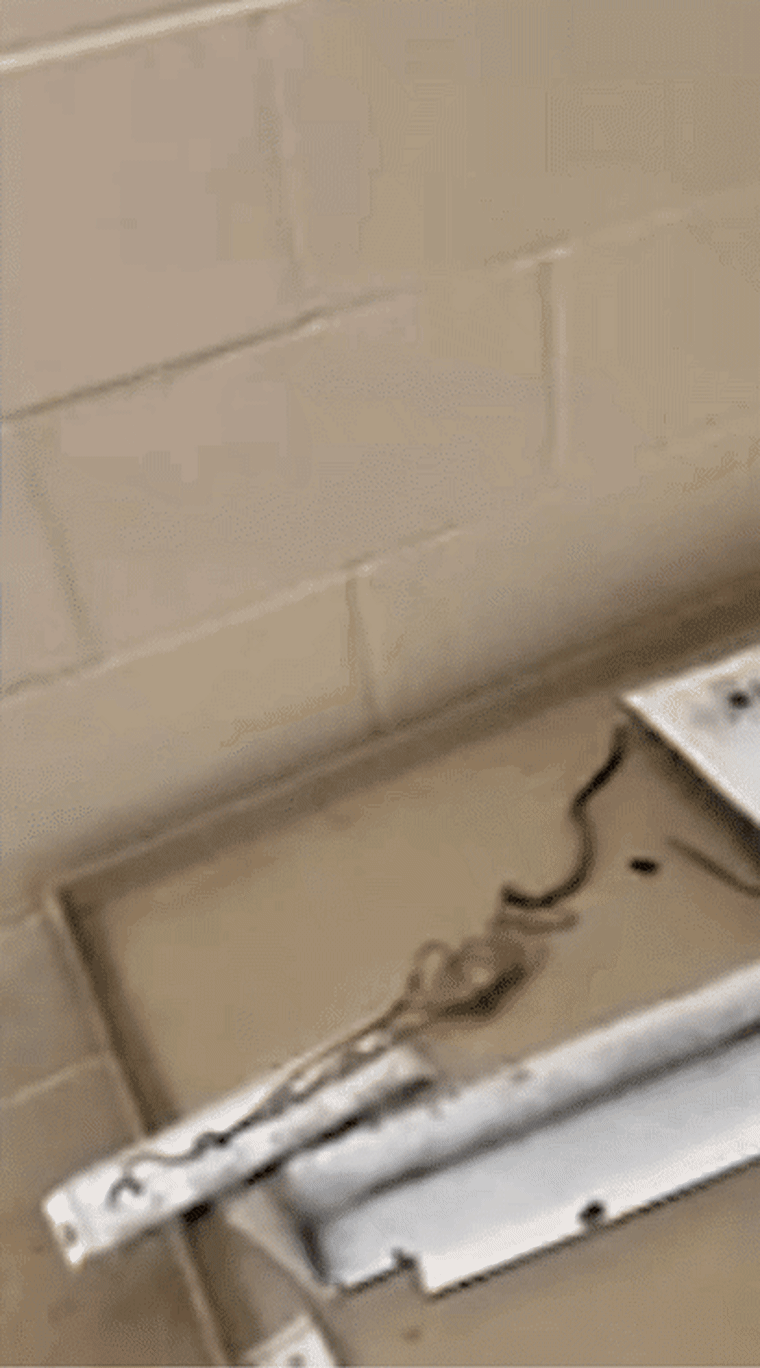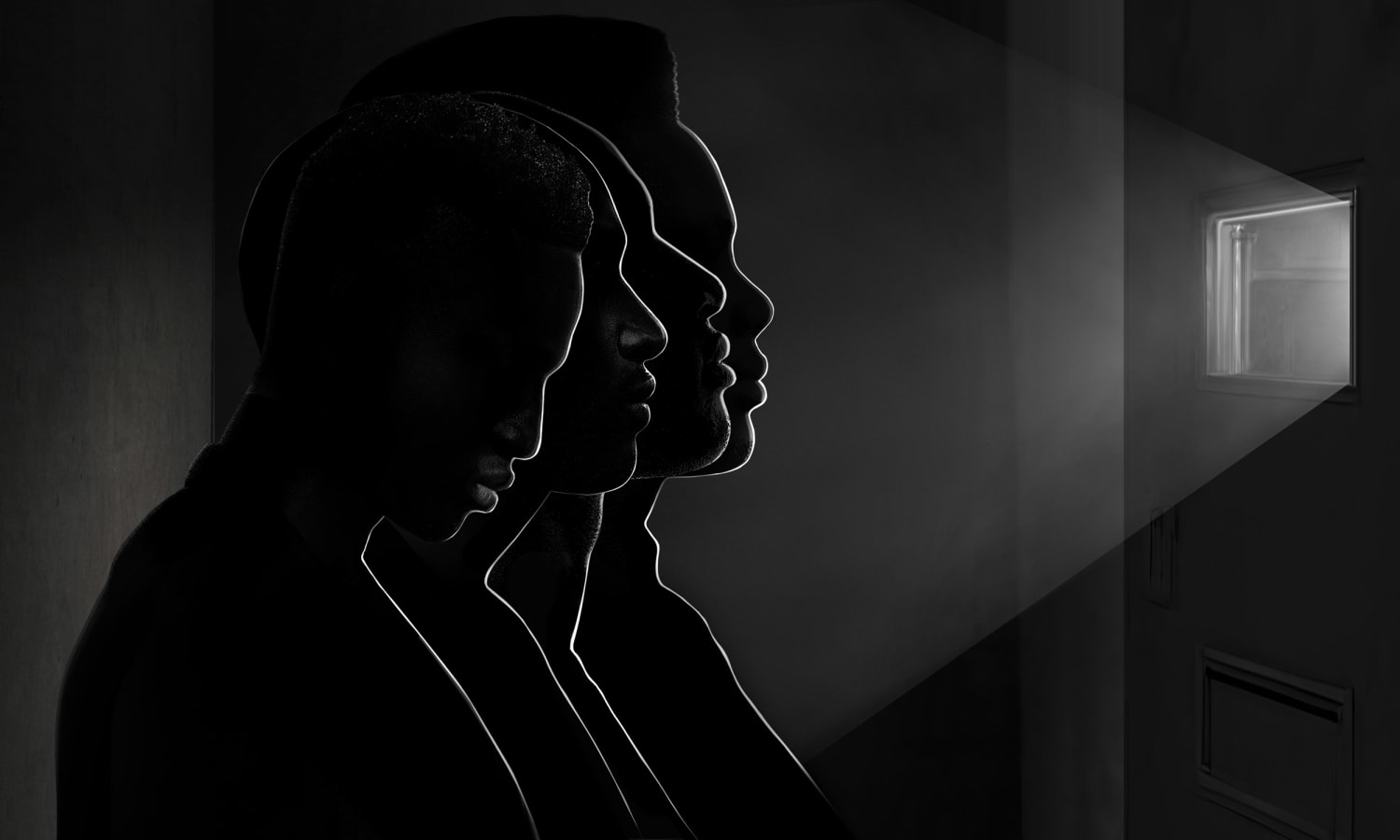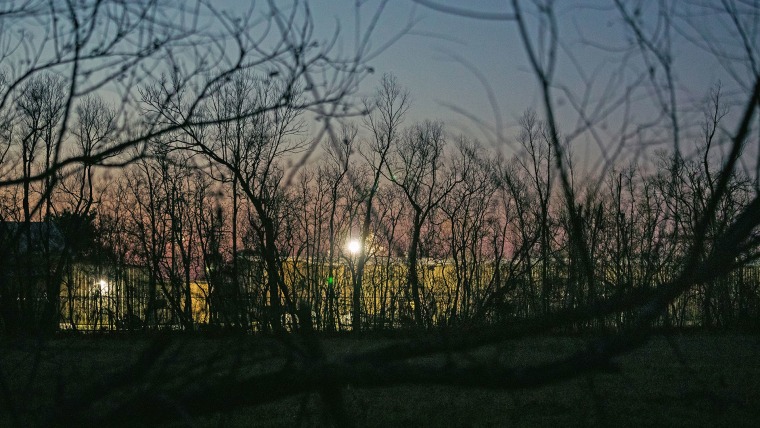“I got frustrated with the whole situation and refused to go back in the pod because of being scared,” one guard wrote in an October incident report after a night spent listening to banging on the walls. Her supervisor, she wrote, advised her “to keep all doors closed secure in case they get out because it was only two female workers,” noting that he did not check the cells because he “did not have enough manpower to do it.”
On several occasions, guards responded to transgressions with violence, according to incident reports obtained through a public records request. Three slammed door hatches on teens’ hands. One struck a boy with his knee and fired pepper spray into a teen’s cell, leaving him coughing and vomiting.
“This is child abuse,” said Mark Soler, executive director at the Center for Children’s Law and Policy, a public interest group based in Washington; he previously served on a Louisiana task force reviewing care at the state’s juvenile facilities. “It’s outrageous that children should be held under conditions where they are locked in their room for most of the day and held in shackles when they exit. It is cruel to the children, and it is far outside accepted professional standards.”
Carmen Daugherty, the policy director at Youth First Initiative, an advocacy organization that seeks to end the incarceration of youth, called the conditions at St. Martinville “egregious.”
“It’s like you put all of the things that we talk about that are so wrong with our youth justice system and you put it in one facility,” she said.
For more on this story, watch “Top Story” on NBC News NOW at 7 p.m. ET
The last two decades have brought enormous change to the U.S. juvenile justice system: Almost every state slashed the number of incarcerated young people by half or more, favoring probation, therapy and community programs for all but those who commit the most severe crimes. But as states lock up fewer children, many are struggling to care for the ones left behind, the most troubled among an already marginalized group that is disproportionately Black and facing complex psychological and social issues.
Some states have addressed these youths by “wrapping them pretty tight” with therapy, education and family involvement, said Candice Jones, former director of juvenile justice in Illinois. “The programs and services we’re providing them need to be the best.” But many states have fallen short. In recent years, the U.S. Department of Justice has investigated abuses in juvenile facilities in Texas, South Carolina and other places, including the overuse of solitary confinement and restraints, and insufficient rehabilitation and education.
“Story after story emerging from juvenile systems reveal that agencies around the country don’t have a good handle on how to manage their most challenging youth,” said Michele Deitch, a juvenile justice expert at the University of Texas at Austin. “They’re just throwing up their hands and saying: ‘We’ve exhausted our options. We just don’t know what to do.’”
Louisiana holds about 350 youths, more than 80 percent of whom are Black, in secure facilities; it has promised for decades to move its lockups toward a more therapeutic model. But like many states, it has failed to fully fund or commit to the new approach. That, combined with a debilitating staff turnover caused by low pay and dangerous conditions, has meant staff haven’t been properly trained to prevent the violence and chaos that has erupted.

St. Martinville was designed to be a “transitional treatment unit” for “youth who demonstrated an inability or unwillingness to discontinue violent and aggressive acts,” said Office of Juvenile Justice spokeswoman Beth Touchet-Morgan.
Of the 31 teens who have been transferred to St. Martinville for behavioral reasons since it opened, 21 have “successfully” been returned to other facilities, she said. (Louisiana also sent more than 50 teens to St. Martinville for Covid quarantine.) The spokeswoman said that while the staff works to minimize situations requiring physical interventions, they may be necessary to ensure safety. She did not comment on specific altercations, but she said the department reviews incidents and holds staff members accountable if they violate policy, subjecting them to disciplinary action and sometimes requiring additional training. The agency rejected reporters’ requests to tour the facility, and several staff members said they’d been instructed not to talk to the media.
Perry Stagg, the Office of Juvenile Justice’s assistant secretary, confirmed that St. Martinville did not initially provide education but denied the accounts from teens and their lawyers that those detained had been confined all day and shackled when they left their cells. The agency’s policy, he said, is to keep youths unrestrained when they are out of their cells, unless they are acting violently or disruptively. Stagg said St. Martinville has been providing substance abuse counseling and recreation, and he suggested that the teens who said that they were denied those services were either lying or had opted out.
“It’s up to the child to participate,” he said. “We can’t force them to participate, but it’s absolutely available.”
While conditions have improved in recent months, with some — but not all — teens now allowed out of their cells during the day, and math and English instruction now being offered, the facility is still providing less education than the law requires and youths are still being shackled when they leave the common area in front of their cells, according to state records, teens and their families and attorneys.
The young people locked up in St. Martinville have committed serious crimes. The eight whose stories were shared with ProPublica, The Marshall Project and NBC News include boys who had stolen cars and guns and escaped from multiple lockups. One teen broke a guard’s arm in a fight at a previous facility.
But unlike at adult prisons, the goal of the juvenile justice system is not to punish youths for violating the law but to help them go on to lead productive lives. This is especially significant, experts and advocates say, given that Black youths are already overrepresented at every step of the criminal justice process.
“These are still kids,” said Amy Borror, an analyst at the Gault Center, a juvenile justice nonprofit. “They’re scared, they’re mad, they’re confused, they’re away from their homes. And if anybody knows how to deal with them it should be a department of juvenile justice. That’s why they exist. That’s their job.”
‘Born out of necessity’
Known as the lockup capital of the world, Louisiana has relied heavily on solitary confinement for both adults and teens. Officials have long understood that the state needs to move away from discredited methods of punitive juvenile detention; in the late 1990s, the U.S. Justice Department sued the state, noting concerns that ranged from physical abuse to excessive use of handcuffs and solitary confinement.
The federal government dismissed the suit in 2006 after a series of reforms and the promise of others. But the rollout was hampered by aggressive budget cuts, and the Office of Juvenile Justice is still having a hard time recruiting correctional workers, who start at less than $27,000 a year. Hiring has been so difficult that staffers don’t get the necessary training to work with deeply troubled youths and soon leave, experts and local officials said. The result is that, although the state has come a long way since detained teens were showing up at hospitals with broken fingers and jaws, its detention centers have logged hundreds of fights each year. Pandemic-related lockdowns and isolation further strained resources and frayed nerves.
Louisiana officials once again came under scrutiny last year following the 2019 suicides of two teens held in solitary confinement at a youth facility in Ware. A legislative committee in May asked its auditor to investigate the use of solitary in state facilities; that investigation has not yet been completed.
Current state policy caps the use of solitary confinement at 12 hours at a time in most cases, and seven days for “highly disruptive” behavior. The American Medical Association, the American Academy of Pediatrics and the United Nations have all condemned the practice of isolating young people as deeply harmful, leading to depression, anxiety and psychosis. Studies show the majority of kids who die by suicide in lockups are, or recently were, in isolation.
At least 24 states and the federal government have placed strict limits on the use of solitary confinement for young people. The U.S. Department of Justice has intervened in at least a dozen cases involving state and local juvenile justice agencies in the last decade to make clear that overuse of solitary confinement for juveniles is unconstitutional.
And yet, when Louisiana’s Office of Juvenile Justice faced a crisis last year, it fell back on isolation.
In May, youths at the Swanson Center for Youth overtook guards and gained control of the facility. The next month, teens barricaded themselves at Swanson, all but destroying it. Officials needed a place to put the state’s most challenging teens — and fast, so Bill Sommers, the agency’s deputy secretary, said he approached Gov. John Bel Edwards about opening a new facility. While home-like dormitory settings are considered best practice for juvenile detention, the agency leased a 24-cell jail from the St. Martin Parish sheriff where teens could be held in individual cells, according to internal emails.
“We have some youth in our care that are not therapy ready and are not wanting to go down the same path as others, and we don’t have the facilities nor the manpower to hold them in those dormitory settings,” Sommers told a juvenile justice commission last year. “St. Martinville was born out of necessity.”
The state signed a contract with the sheriff on July 26 and began moving in teens shortly after. While the Louisiana Department of Children and Family Services inspects and licenses juvenile group homes and detention facilities where youths are held when they’re first accused of crimes, only the Office of Juvenile Justice has authority over secure care facilities like St. Martinville where teens are placed after they’ve been sentenced. A legislative task force described this “glaring gap in oversight” in 2019, recommending that an outside agency inspect the facilities. But nothing has changed.
Stagg said the facility was intended as a temporary fix until a new, more secure area at Swanson is completed next year. “If we can get them to a more isolated setting, it allows us to separate these kids, offer individual services, work with them one-on-one, provide mentoring, build relationships and try to work with them to get them to a place where we can put them back in a general population setting where they can participate and not be disruptive,” he said.
There was no relationship-building in those first few months, according to youths at the facility, their lawyers, family members and a former staff member. “You’re in your cell all day,” said Rashad, who was 15 when he arrived at St. Martinville last summer after trying to escape from another lockup, where he’d been sent after joyriding in a stolen car. He had only the thin sheet on his bed and the clothes he’d been issued, which did not include socks, he said. He had no books, no paper, no pencils.
“You have to have a strong mind,” said Rashad, who is being identified by his middle name to protect his privacy. “You can’t think about it. If you think about it, it will make you sad.”
Experts say that treating kids like hardened criminals is inhumane and, in some cases, unconstitutional. It’s also counterproductive, often leading to more bad behavior. As teens at St. Martinville began to destroy light fixtures and beds, officials cleared out the cells, a former staffer said in an interview, speaking on the condition of anonymity out of fear of repercussions for future jobs.
“These kids were in their cells with no beds on a concrete floor with a state-issued green mattress — flame retardant — a blanket and a sheet and nothing else. No light. No nothing,” the former staffer said. “Feces were being thrown every single day, multiple times a day. Not a surface in those pods has not had feces on it.”
‘Housed like a death row inmate’
In October, word of the conditions began to seep beyond St. Martinville’s walls.
In the East Baton Rouge court hearing, which was held to check on Rashad’s progress, his lawyers and Judge Gail Grover were told he was being held in solitary confinement and wasn’t receiving court-ordered services including education, substance abuse counseling and prescribed medication. “My jaw dropped,” said Peter Dudley, Rashad’s lawyer. “You’ve got a child that we’re supposed to be trying to rehabilitate. He’s basically being housed like a death row inmate.”
Grover declined to discuss specifics of the case because of laws requiring privacy in juvenile proceedings, but she did say it was the first time she’d held the juvenile justice agency in contempt of court for its treatment of a teen. She ordered Rashad’s immediate release from state custody and told the agency to start providing education. “I give orders because I believe the young people need the services that I’m ordering,” Grover said. “It should be complied with unless there’s a reason.”
Around the same time, the Louisiana Center for Children’s Rights filed a complaint with the state Education Department about the lack of instruction in the facility three months after it opened. “It’s a clear violation of the law,” said Rachel Gassert, the organization’s policy director. “To open a facility without making sure you have everything set up that you need to provide for kids is very concerning.”
The state Department of Education, which oversees instruction in juvenile facilities, and the Louisiana Special School District, which provides services to children with disabilities in state facilities, said they didn’t learn about the new facility until the fall, months after it opened. The Special School District said it didn’t begin providing services, as required by state and federal law, until Dec. 17.
“We were basically in emergency mode,” Stagg said about the lack of education originally offered. “That wasn’t something we were just being negligent on. It took time to put together.” When asked about the other issues raised in the contempt hearing, Stagg said he didn’t recall specific details but said teens have been provided with all required services.
Source: | This article originally belongs to Nbcnews.com











